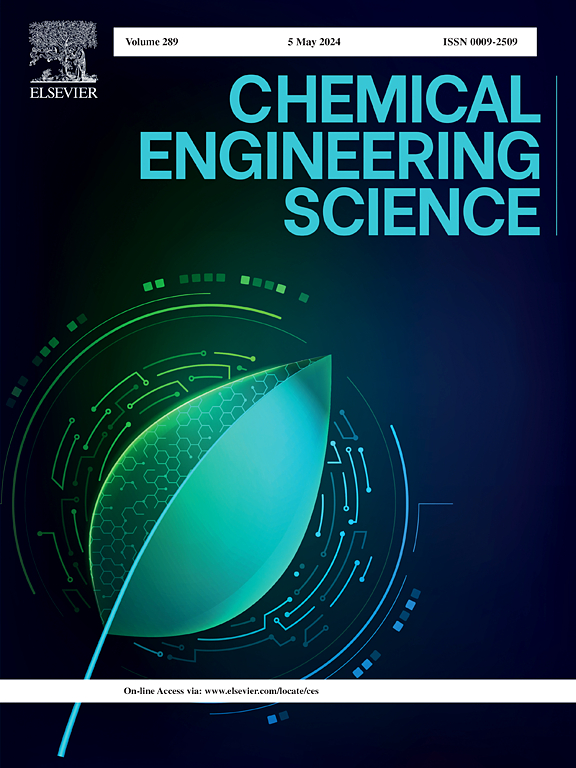Hybrid modeling of photocatalytic contaminant degradation using nanomaterials synthesized with microalgal extracts
IF 4.1
2区 工程技术
Q2 ENGINEERING, CHEMICAL
引用次数: 0
Abstract
Synthetic dyes released through industrial effluents pose significant environmental risks due to their persistence and toxicity. Photocatalytic degradation through metal nanoparticles offers a promising, eco-friendly remediation approach. This study presents a hybrid modeling framework for simulating the visible-light-driven degradation of Brilliant Blue R using silver nanoparticles (AgNPs) synthesized through extracts of Haematococcus pluvialis, Spirulina platensis, and Chlorella vulgaris. The biogenic AgNPs exhibited favorable physicochemical properties, including crystalline sizes of 13–16 nm and band gap energies between 2.17 and 2.33 eV.A simplified deterministic model was first developed, accounting for adsorption–desorption equilibrium and degradation kinetics, which enables analytical estimation of key kinetic parameters. These parameters were used to train artificial neural networks (ANNs) that map experimental conditions such as light intensity, dye concentration, nanoparticle dosage, and pH to degradation kinetics.To overcome the limited size of datasets obtained through experiments, a novel data augmentation strategy was implemented using Gaussian noise derived from measurement uncertainty and confidence intervals of the deterministic model’ parameters. This strategy enabled the significant augmentation of data enhancing the ANN performance. Indeed, the global mean squared error dropped from 5.6 × 10−4 to 1.3 × 10−5 for AgNPs from H. pluvialis, from 1.6 × 10−2 to 3.3 × 10−6 for C. vulgaris, and from 2.4 × 10−3 to 4.2 × 10−4 for S. platensis when using both input and output augmentation.The proposed hybrid framework couples mechanistic interpretability with data-driven prediction providing a reliable tool for optimizing photocatalytic degradation processes via sustainable nanomaterials of microalgal origin.

微藻提取物合成纳米材料光催化污染物降解的混合建模
工业废水中释放的合成染料因其持久性和毒性而对环境构成重大威胁。通过金属纳米颗粒进行光催化降解提供了一种很有前途的环保修复方法。本研究提出了一种混合建模框架,利用雨红球菌、平螺旋藻和寻常小球藻提取物合成的银纳米颗粒(AgNPs)来模拟亮蓝R的可见光降解。该生物源AgNPs具有良好的物理化学性质,晶体尺寸为13 ~ 16 nm,能带能在2.17 ~ 2.33 eV之间。首先建立了一个简化的确定性模型,考虑了吸附-解吸平衡和降解动力学,从而可以对关键动力学参数进行分析估计。这些参数被用来训练人工神经网络(ann),以映射实验条件,如光强度、染料浓度、纳米颗粒剂量和pH值对降解动力学的影响。为了克服实验获得的数据集规模有限的问题,利用确定性模型参数的测量不确定性和置信区间产生的高斯噪声实现了一种新的数据增强策略。该策略使数据量显著增加,增强了人工神经网络的性能。事实上,全球均方误差从5.6 × 10−4到1.3 ×对AgNPs 10−5 h . pluvialis从1.6 × 10−2到3.3 × 10−6 c .寻常的和从2.4 × 10−3到4.2 ×10−4 s platensis 当使用输入和输出增加。所提出的混合框架将机制可解释性与数据驱动预测相结合,为通过微藻来源的可持续纳米材料优化光催化降解过程提供了可靠的工具。
本文章由计算机程序翻译,如有差异,请以英文原文为准。
求助全文
约1分钟内获得全文
求助全文
来源期刊

Chemical Engineering Science
工程技术-工程:化工
CiteScore
7.50
自引率
8.50%
发文量
1025
审稿时长
50 days
期刊介绍:
Chemical engineering enables the transformation of natural resources and energy into useful products for society. It draws on and applies natural sciences, mathematics and economics, and has developed fundamental engineering science that underpins the discipline.
Chemical Engineering Science (CES) has been publishing papers on the fundamentals of chemical engineering since 1951. CES is the platform where the most significant advances in the discipline have ever since been published. Chemical Engineering Science has accompanied and sustained chemical engineering through its development into the vibrant and broad scientific discipline it is today.
 求助内容:
求助内容: 应助结果提醒方式:
应助结果提醒方式:


